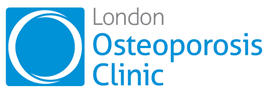When it comes to treating osteoporosis, one size certainly doesn’t fit all. At the London Osteoporosis Clinic, we know how vital it is to tailor treatment plans to each individual’s unique needs. Two medications that are often at the forefront of osteoporosis treatment are Zoledronic Acid and Teriparatide. While both are highly effective, they work in vastly different ways.
Zoledronic Acid: The Unyielding Protector
Belonging to the class of drugs known as bisphosphonates, Zoledronic Acid functions much like an unyielding shield. Picture your bone as a fortress: just like any fortress, it’s under a constant state of build-up and tear-down. Zoledronic Acid serves to inhibit the ‘tear-down’ crew, also known as osteoclasts. By doing so, it reduces bone resorption and helps maintain or even slightly increase bone density.
Mechanism of Action
- Inhibits osteoclast-mediated bone resorption.
Teriparatide: The Master Builder
Teriparatide, however, takes an entirely different approach. Think of it as a master builder that rebuilds the fortress from within. It is an anabolic agent, a synthetic form of parathyroid hormone (PTH) that stimulates bone formation. By encouraging osteoblasts, the bone-building cells, Teriparatide effectively increases bone mass and improves its structural integrity.
Mechanism of Action
- Stimulates osteoblast-mediated bone formation.
Complementary Forces
One fascinating aspect of osteoporosis treatment is that Zoledronic Acid and Teriparatide can sometimes be used in tandem. It’s a strategic process: a patient might start with Teriparatide to build up bone and transition to Zoledronic Acid to preserve those gains.
A Tailored Approach
Given their different but complementary mechanisms of action, the choice between Zoledronic Acid and Teriparatide is far from arbitrary. It’s a decision carefully made by clinicians, like us at the London Osteoporosis Clinic, based on a thorough evaluation of each patient’s medical history, bone density scores, and lifestyle factors.
In conclusion, understanding the distinct roles that Zoledronic Acid and Teriparatide play can empower both clinicians and patients to make informed choices about osteoporosis treatment.
For more information on personalised osteoporosis treatment plans, do not hesitate to reach out to us at the London Osteoporosis Clinic.
When treating osteoporosis, one size certainly doesn’t fit all. At the London Osteoporosis Clinic, we know how vital it is to tailor treatment plans to each individual’s unique needs. Two medications that are often at the forefront of osteoporosis treatment are Zoledronic Acid and Teriparatide. While both are highly effective, they work in vastly different ways.
Zoledronic Acid: The Unyielding Protector
Belonging to the class of drugs known as bisphosphonates, Zoledronic Acid functions much like an unyielding shield. Picture your bone as a fortress: just like any fortress, it’s under constant build-up and tear-down. Zoledronic Acid inhibits the ‘tear-down’ crew, also known as osteoclasts. Doing so reduces bone resorption and helps maintain or even slightly increase bone density.
Mechanism of Action
- Inhibits osteoclast-mediated bone resorption.
Teriparatide: The Master Builder
Teriparatide, however, takes an entirely different approach. Think of it as a master builder that rebuilds the fortress from within. It is an anabolic agent, a synthetic parathyroid hormone (PTH) form that stimulates bone formation. Teriparatide effectively increases bone mass and improves its structural integrity by encouraging osteoblasts in the bone-building cells.
Mechanism of Action
- Stimulates osteoblast-mediated bone formation.
Complementary Forces
One fascinating aspect of osteoporosis treatment is that Zoledronic Acid and Teriparatide can sometimes be used in tandem. It’s a strategic process: a patient might start with Teriparatide to build up bone and transition to Zoledronic Acid to preserve those gains.
A Tailored Approach
Given their different but complementary mechanisms of action, the choice between Zoledronic Acid and Teriparatide is far from arbitrary. It’s carefully decided by clinicians like us at the London Osteoporosis Clinic based on a thorough evaluation of each patient’s medical history, bone density scores, and lifestyle factors.
In conclusion, understanding the distinct roles that Zoledronic Acid and Teriparatide play can empower clinicians and patients to make informed choices about osteoporosis treatment.
For more information on personalised osteoporosis treatment plans, do not hesitate to contact us at the London Osteoporosis Clinic.

